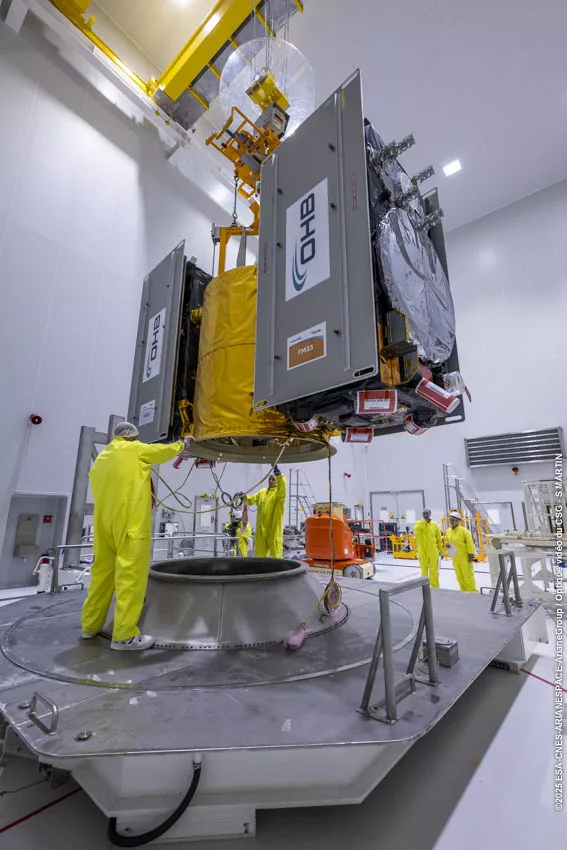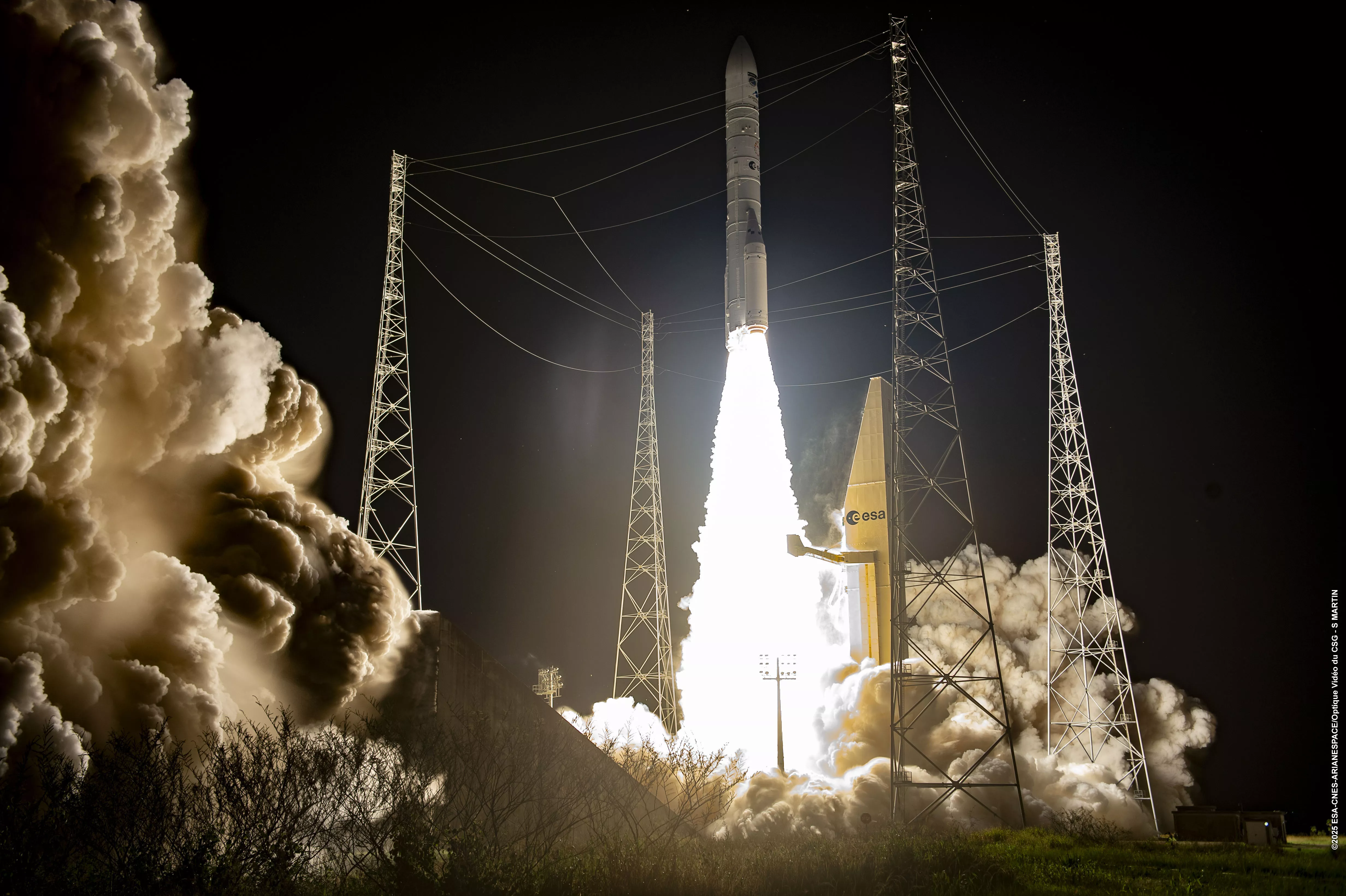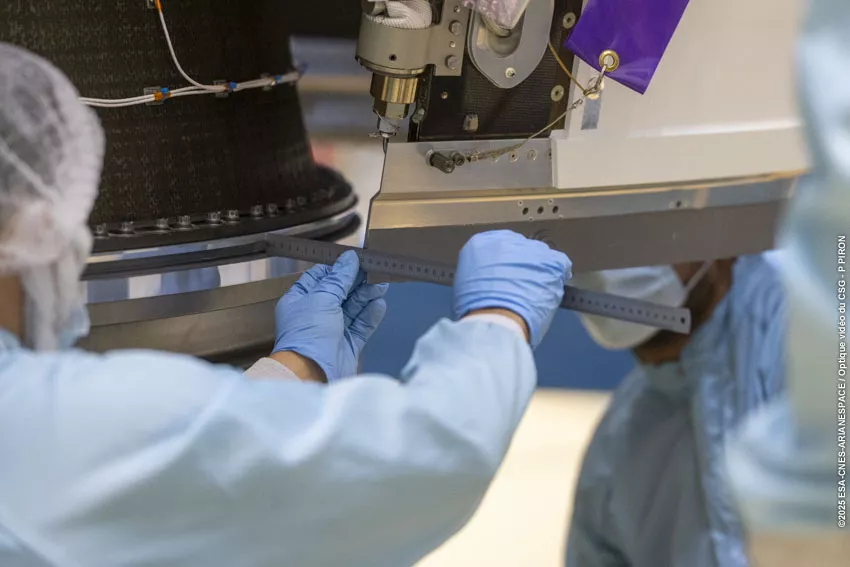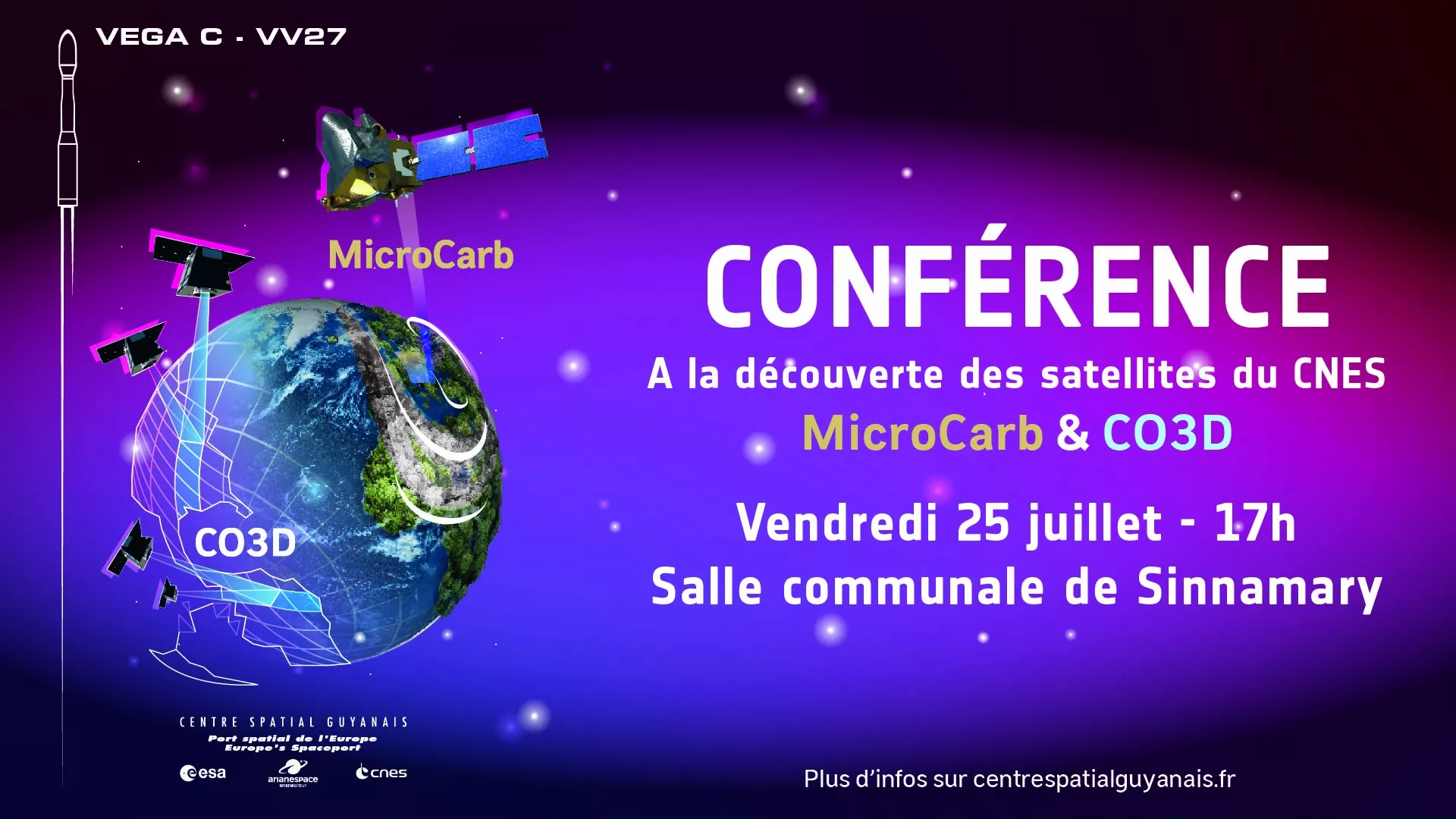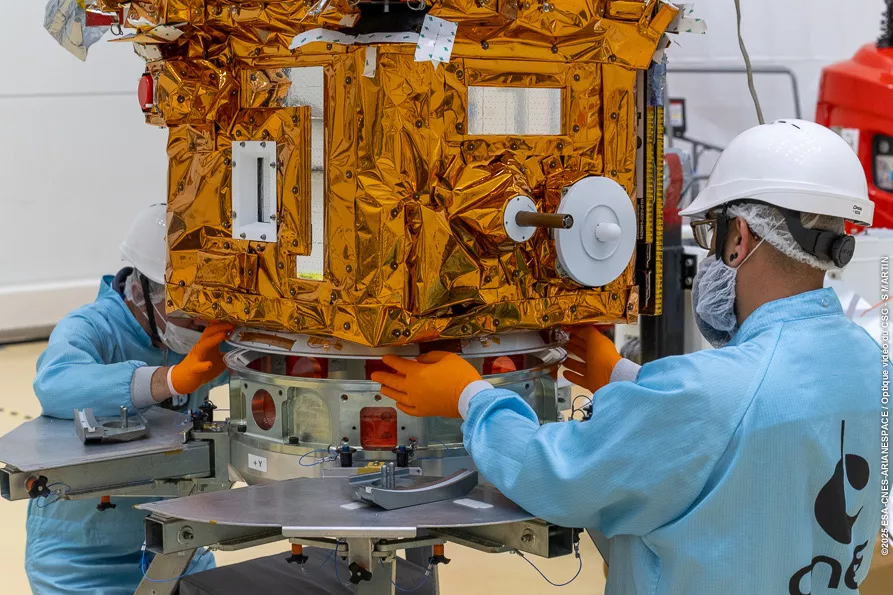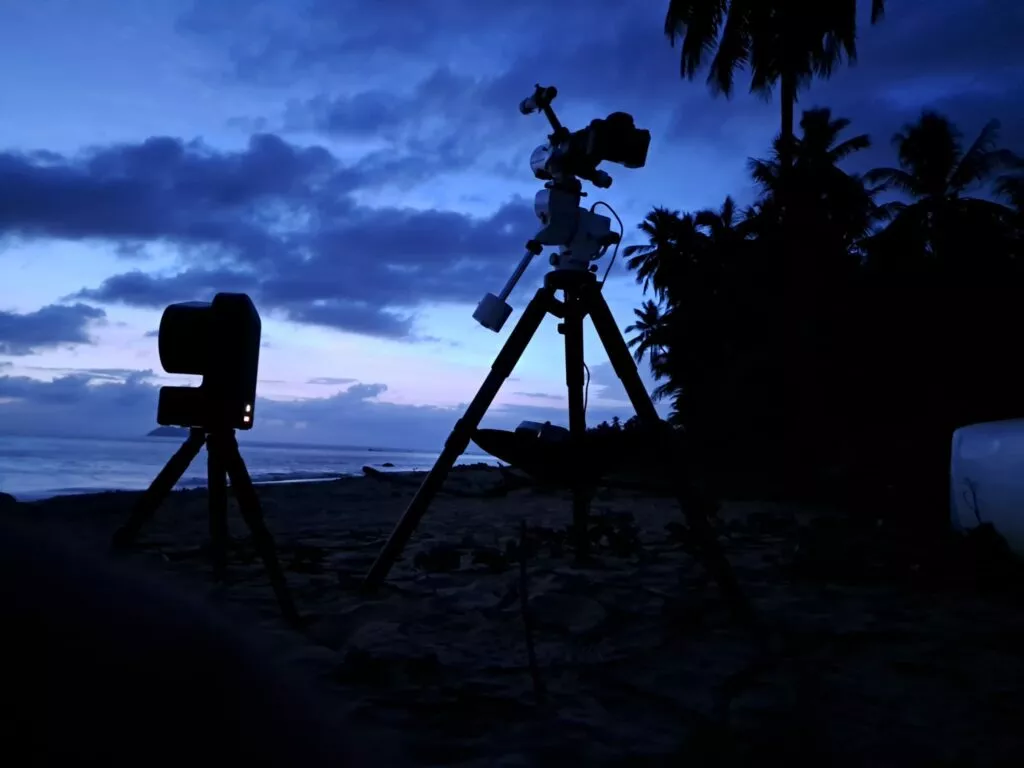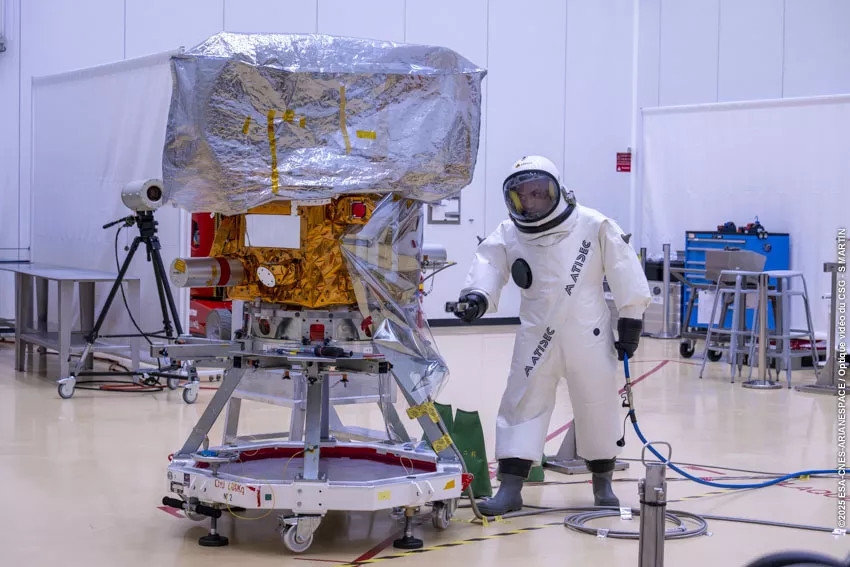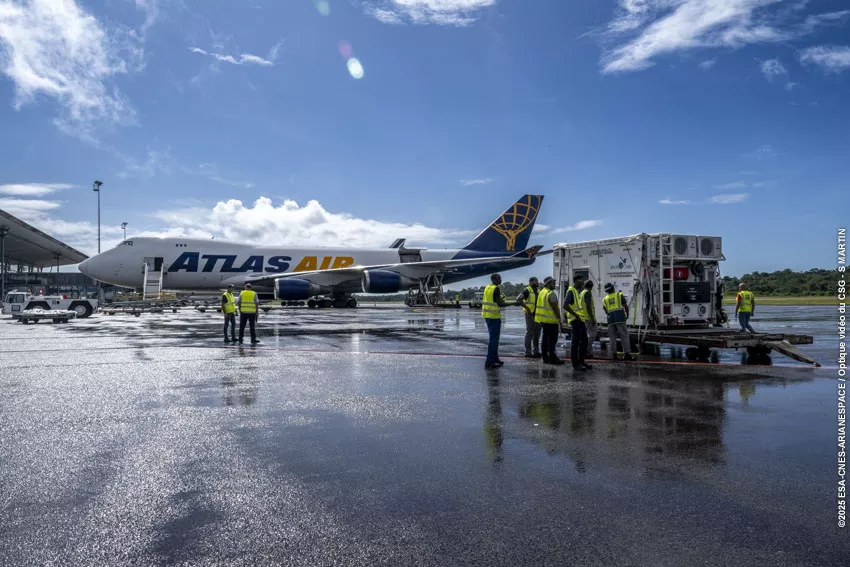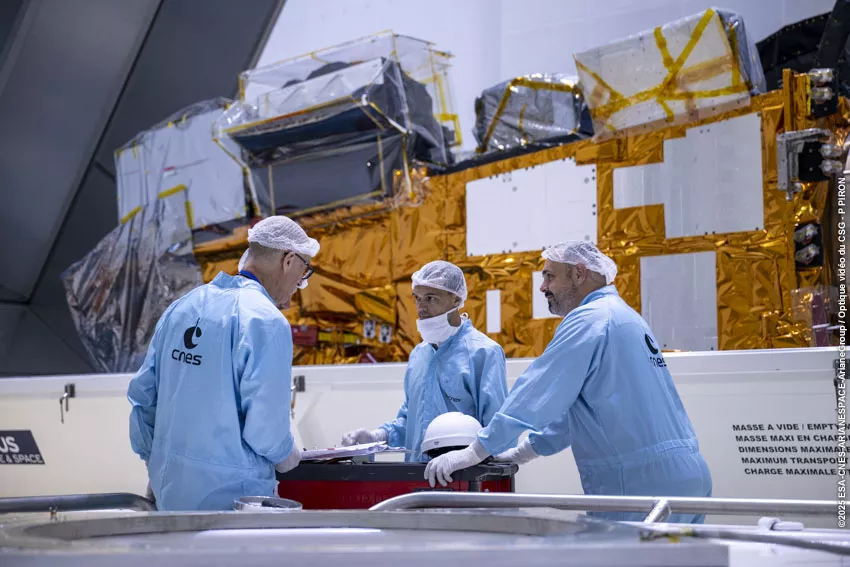Biomass lifts off successfully under the rising sun in Kourou
On Tuesday, 29 April 2025, at 6:15 a.m., as the sky over Kourou was bathed in the first light of dawn, the Vega C rocket successfully lifted off from Europe's Spaceport in French Guiana. It carries on board Biomass, a European satellite essential for better understanding the health of our planet’s forests. A mission at dawn for a more sustainable Earth.
In golden light and clear skies, Europe's Spaceport witnessed a pivotal moment for environmental science: the launch of Vega C’s VV26 mission, carrying the Biomass satellite for ESA’s (European Space Agency) Earth Explorer programme.
This next-generation satellite, manufactured by Airbus Defence and Space, aims to improve our knowledge of forests worldwide. Using a P-band radar capable of penetrating the canopy, Biomass will measure forest structure, plant biomass and the amount of carbon stored in forests with unprecedented precision to provide key data for monitoring the effects of climate change.
The launch, operated by Arianespace, is part of Europe’s commitment to autonomous access to space for the benefit of the planet. After a 57-minute flight, the satellite was successfully placed into a sun-synchronous orbit at an altitude of 666 km. This achievement is a testament to the performance of the Vega C launcher, whose first three stages and the AVUM+ upper stage executed their mission perfectly.
Biomass will operate for at least five years, providing essential data for research on the carbon cycle and biodiversity preservation as well as the study of desert geology and ice caps.
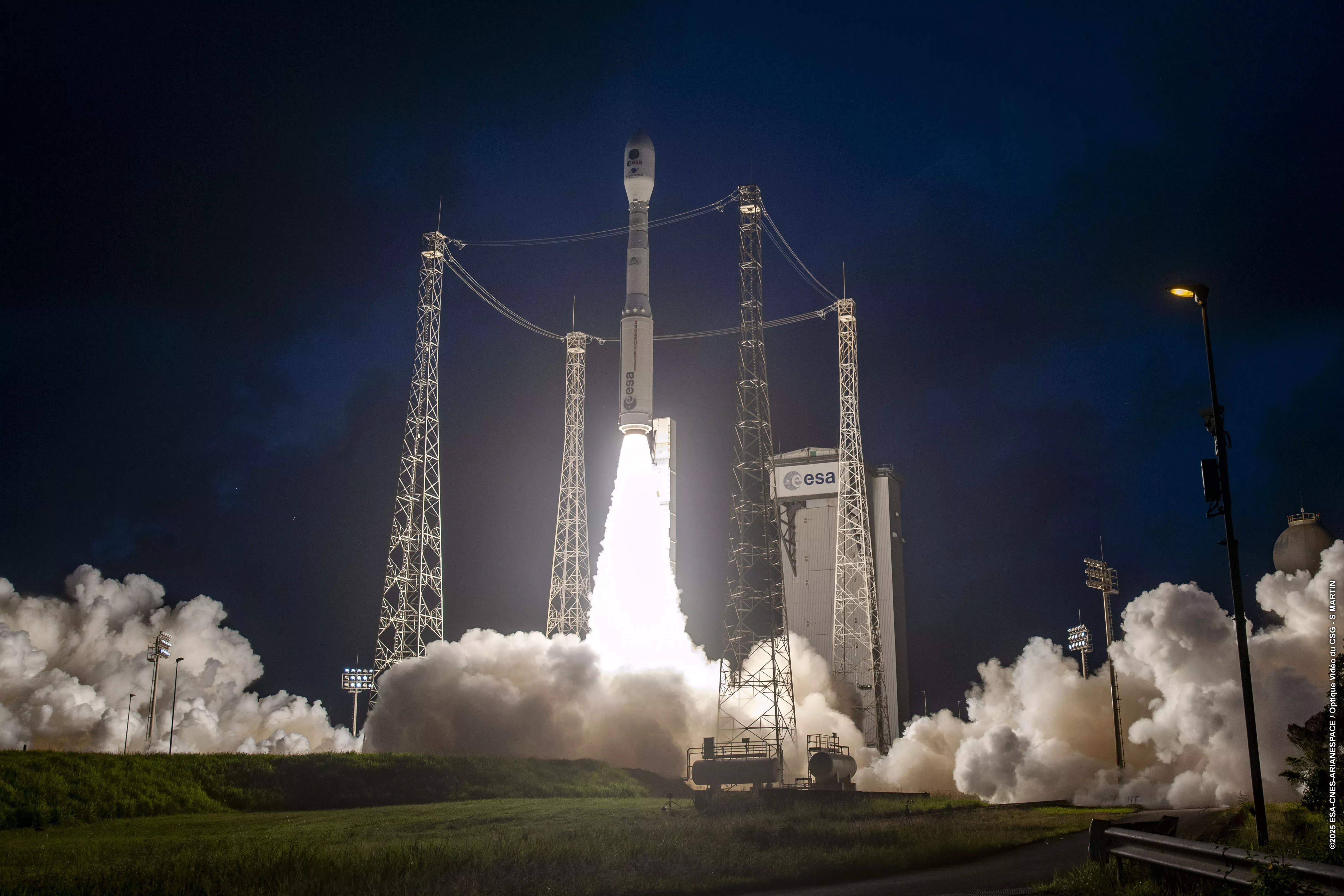
On the same section
-
VA266 mission in a nutshell
01/12/2025VV28 mission in a nuthsell
01/12/2025VA264 mission is a success!
04/09/2025VV27: behind the scenes at Europe’s spaceport as MicroCarb and CO3D get ready for lift-off
31/07/2025VV27: two conferences to find out more about satellites
30/07/2025Flight Vega-C : VV27 mission in a nutshell
24/07/2025Stargazing Event Ahead of the VV27 Mission Launch
